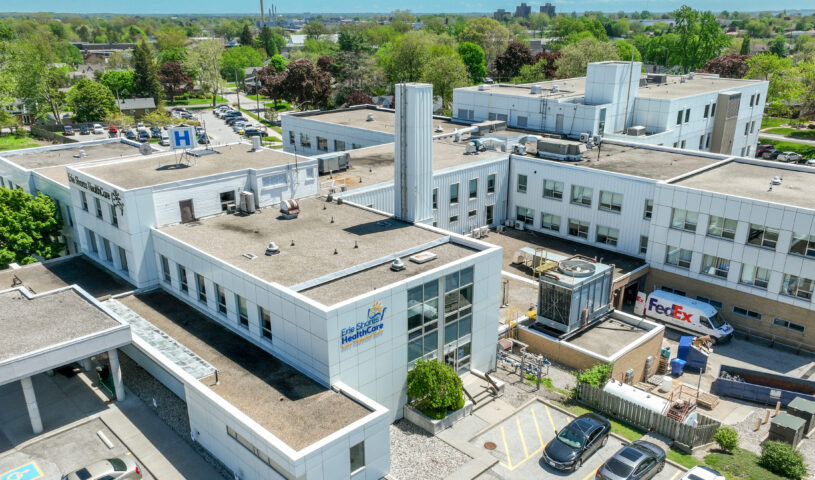Innovative contracting quickly solves problems
 Whether it’s routine repairs, or emergency work that must be conducted, procuring goods and service for building maintenance can be a big source of problems and costs for most entities. Photo: Adobe Stock
Whether it’s routine repairs, or emergency work that must be conducted, procuring goods and service for building maintenance can be a big source of problems and costs for most entities. Photo: Adobe Stock
Public teams are continually challenged with new technologies, emergencies, tight budgets, and diminishing human resources.
On the other side of the procurement table, evolving spending trends, new legislation and prioritization of social policies can have significant impacts for suppliers in serving their government and educational clients.
Whether it’s routine repairs, or emergency work that must be conducted, procuring goods and service for building maintenance can be a big source of problems and costs for most entities.
When both sides work together, innovative contracting solutions can be implemented to address problems – from the routine to the complicated.
Latest Spending Trends
Deltek’s 10 Hotspots in Canadian Government Contracting for 2024, shares insights into the $200B spent annually through 80,000 bids and tenders issued across all government entities – federal, provincial, and local government. Currently, overarching government procurement priorities are to keep Canadians safe from natural disaster, cyber security, or crime; make Canada increasingly competitive in the world marketplace; and invest back into Canadian businesses and communities.
According to Brynn Bruder, Senior Research Analyst, “our market intelligence demonstrates the trends and growth rates within different sectors, including ‘Hotspots’ which are specific products or services that are increasing in demand.” Within the identified top 10 Hotspots, the three that topped the list include:
- 36 per cent growth in Automating with Robots and Drones for surveillance, construction, fire detection and firefighting. Canada is also expanding its regulations to allow for more drone activities such as supporting rural deliveries of food and medicines.
- 38 per cent growth in Promoting Cultural Diversity to provide cultural services and construction of cultural facilities. At the federal level, Canada has made a commitment to Indigenous Reconciliation efforts and partnerships with First Nations.
- 58 per cent growth in Responding to Disasters for emergency preparedness, addressing extreme weather events like wildfires, floods and hurricanes and debris removal. Governments are boosting their emergency response capabilities at all levels with many in the process of conducting risk assessments and identifying any gaps to fill for future disasters.
Taking New Contracting Approach
When a hospital in southwestern Ontario experienced roofing leaks in its hospital patient rooms and cafeteria, local contractors were immediately brought in to stop the water intrusion and patch the leaking roof. However, those fixes didn’t address the underlying cause, and moisture returned.
The hospital facilities team determined that a more effective solution was needed before the upcoming winter season.
Rather than the typical roof repair approach of manual inspection or pulling up sections to explore potential damage, the hospital invited Tremco Roofing and Building Maintenance to conduct a thermal scan, using infrared technology to create a detailed thermal map of how and where hidden moisture was located.
The scan revealed a large amount of wet insulation, comprising 53 per cent of the affected roof section.
Armed with this knowledge, the local Tremco Roofing and Weatherproofing Technologies Canada (WTC) team quickly provided detail drawings and specifications to replace the affected roofing area. Proposals from four local contractors were gathered through the Kinetic GPO contract which includes an option to use the Canadian Cooperative Contractor Network (CCCN), administered by Tremco.
The CCCN vets contractors based on a variety of predefined criteria representing industry best practices to ensure quality and allows for procurement through the Kinetic GPO contract.
A key benefit of using an already awarded GPO contract is the shortened procurement timeline to bring contractors onboard to quickly address facility issues and repairs.
The project moved incredibly quickly – from a roof scan in May to a proposal and start date in June. The hospital facilities team was so pleased with the expediency and results that they decided to scan additional roof areas and uncovered moisture hidden in six other roof areas. Those findings enabled them to address and curtail future leaks.
Eventually, seven roof sections were replaced with Tremco’s Cold Process 3 Ply BURmastic® System. The chosen system provides superior weatherproofing, is easy to install, low in odor, solvent-free, and uses no kettles or torches, making it ideal for the sensitive healthcare environment.
During one of the roof replacement projects, contractor Rauth Roofing observed significant deterioration throughout an existing roof system not originally scheduled for replacement.
“By utilizing Kinetic GPO we were able to work quickly and directly with the client to account for the additional roof replacement, secure material pricing and leverage our resources already on site,” David Rauth of Rauth Roofing noted. “This enabled us to provide an immediate and cost-effective solution to their roofing problems.”
Addressing Inside the Building
Furnishings and workstations are an essential part of any government office or higher education classroom settings, and constantly transitioning to accommodate technology and unique environments.
Since this can be a major expense for most budgets, it is crucial to manage the costs, while obtaining the best quality products for a longer lifespan. Wayne Wilson, President of Business Furnishings, a Steelcase dealership, shares success stories across Saskatchewan, where entities have taken advantage of the cost benefits and value-added services offered through co-operative contracting.
A large city within the province purchased and refurbished an older building to serve as a main operations center with key departments housed within.
Due to the need to mitigate environmental concerns, the construction schedule experienced delays. When the building was finally ready to be equipped, the existing architectural design contract did not include furnishings, which were then required to be purchased separately.
As a result, the decision to access Kinetic GPO co-operative contract and made purchases in this manner. The building was soon furnished to enable city staff to move in and continue their operations.
A First Nations Organization was expanding its operations, with the need to move to and develop a new office setting. The design required enclosed offices, open workstations, and meeting rooms for 30 staff members and visitors. After being introduced to the concept of co-operative contracting, their procurement authority reviewed the contracts for compliance.
Being a non-profit provided the ability to use the awarded furniture contracts to quickly equip the offices. According to Wilson, “as a local dealer within the community, we can quickly respond through these types of nationally awarded contracts. The customer gets the best of both world – local, dedicated service with volume discount pricing.”
Co-operative Contracting on the Rise
According to the National Cooperative Procurement Partners (NCPP) Association, co-operative contract use is growing as teams face diminishing resources and expanding demands. NCPP promotes educational content and advocacy to assist public teams better understand group buying, which has been more widely available since the update of the Trade Agreements in 2017.
As one of the leading co-operative organizations in Canada, Kinetic GPO has witnessed the growth and adoption of this important contracting tool.
According to Sandra Lisi, National Director of Business Development, “Group Purchasing Organizations (GPO) in Canada are becoming a key partner for broader public sector to leverage as the procurement functions within these entities are required to obtain the best value for money with limited resources and time to market.
A GPO can assist these entities with existing agreements that have been procured in an open, fair, transparent and compliant manner to take some of the pressures off of procurement teams. As demands on buying needs increases, GPO’s are a tool in their procurement tool box to assist with their needs in a timely manner.” MW
Tammy Rimes, MPA, is the executive director of the National Cooperative Procurement Partners Association for North America. Rimes, an advocate for best practices and good public procurement policies, writes articles and presents topics related to local government and education.



